- Home
- Encyclopedia
- Marking The Past: A History of Wyoming’s Histor...
Marking the Past: A History of Wyoming’s Historical Markers
One of the many delights of traveling is spotting a monument or marker—a little curiosity to tell you the significance of where you are—and help you learn some history.
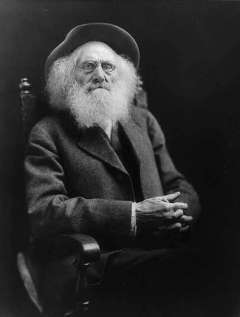
Historical markers and monuments began being placed in Wyoming before statehood. In 1882, the Union Pacific spent $64,000 to place possibly the first monument in the territory at what was once the highest point on the U.P. Railroad. Located about 20 miles east of Laramie, Wyo., near the Vedauwoo exit on I-80, the Ames Monument is dedicated to Oakes and Oliver Ames, politicians and financiers of the railroad. Their business acumen is credited with the completion of the transcontinental railroad, but the work also instigated accusations of fraud and a censure from Congress for Oakes.
The Union Pacific may have been the first to place a marker in the territory, but it was Ezra Meeker’s national movement that truly inspired the effort to mark the historic places in Wyoming. Meeker traveled the Oregon Trail in 1852 at the age of 21 with his wife and young baby. In Washington he established and then lost a hops empire and then he prospected in the Yukon.
When he returned to his Washington home, he confronted a growing fear that the nation was forgetting about the historic trail he traveled over 50 years back. In 1906, at the age of 75, Meeker found himself tracing the trail back east with a wagon and ox team, delivering speeches, raising money and placing markers & inscriptions along his route.
While in Wyoming on this trip, he hauled a native boulder to mark South Pass and inscribed into Independence Rock. Meeker’s trek in 1906 took him to the streets of New York City and to Washington, D.C. for an audience with President Theodore Roosevelt. This 1906 monument expedition would be the first of many, and Meeker’s efforts would spark a national movement, inspiring individuals and patriotic groups like the Daughters of the American Revolution in Wyoming to join his cause.
Two years after Meeker’s first monument expedition over the historic trails, Wyoming U. S. Representative Frank W. Mondell secured federal funding for a monument of native cobblestone placed on so-called Massacre Hill near Story, Wyo. The monument memorializes the battle that took place there on Dec. 21, 1866, where Lakota warriors ambushed and killed around 80 soldiers under the command of Lt. William J. Fetterman.
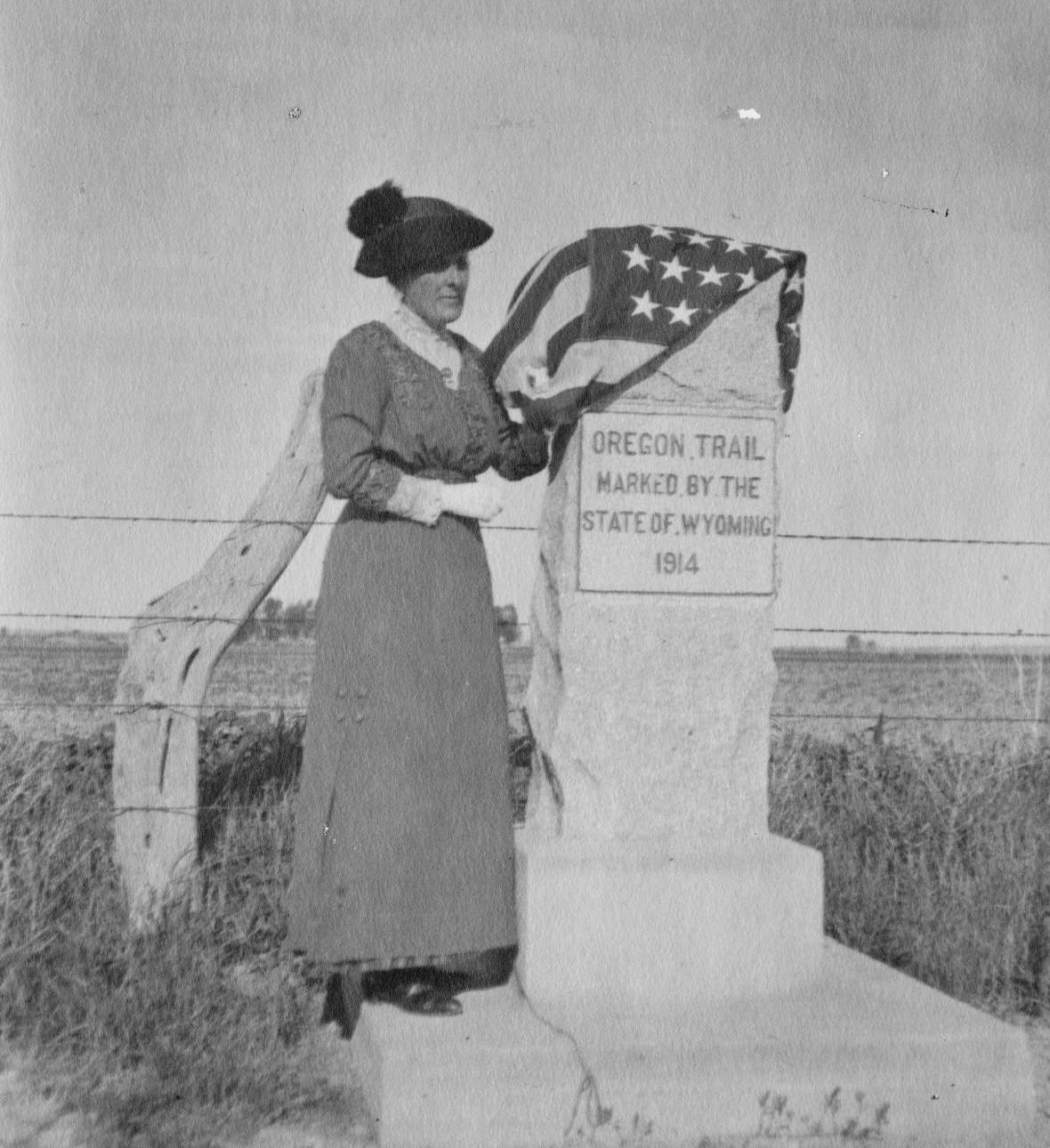
By 1911, chapters of the Wyoming Daughters of the American Revolution began placing monuments to the historic trails. That year the Jacques Laramie Chapter placed the first monument to the Overland Trail in Albany County. Early in 1913, magazines in Wyoming began running a passionate plea for state funding to support a memorialization effort on the historic trails. Written by Grace Raymond Hebard, who was the organizing chapter regent for the Jacques Laramie Chapter, as well as a prominent University of Wyoming professor, the essay advocated, “The old Oregon Trail should be marked before all signs of this historic highway are obliterated.” To accomplish this goal, Hebard envisioned a public-private partnership between the State of Wyoming and the Daughters of the American Revolution.
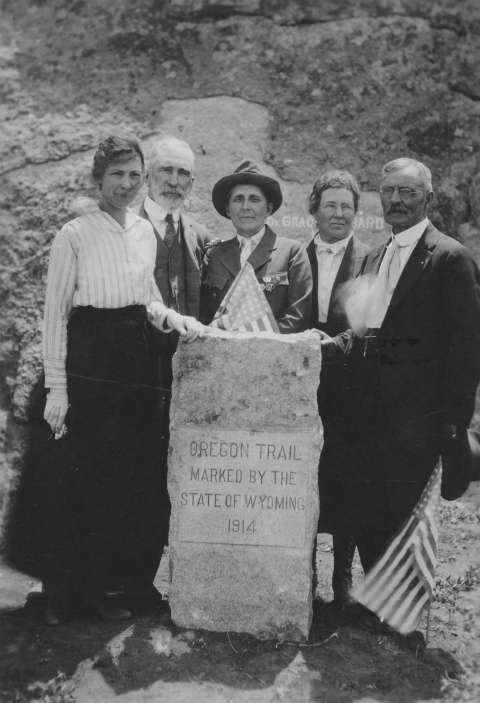
That year the Twelfth Wyoming State Legislature set aside $2,500 for the creation of the Oregon Trail Commission. Gov. Joseph M. Carey appointed Herman Gould Nickerson as president of the commission; DAR State Regent Emily Patten as secretary; and A.J. Parshall to the third seat. By the end of 1914, Emily Patten moved to Washington D.C. and Hebard stepped in as both secretary to the commission and the state regent for DAR. Mrs. J.T. Snow also took over Parshall’s seat in 1915.
In the commission’s first two years, from 1913-1914, they purchased markers for 24 sites, many being placed during that time as well. They dedicated another 20 to 25 markers in the next two years. Initially the commission limited itself to marking the Oregon and Bozeman trails, but it eventually expanded to placing monuments at other historic locations, such as at the South Pass City home of Esther Hobart Morris, the nation’s first woman judge. The commission also worked with Ezra Meeker to support his national projects and provide information about the trails in Wyoming. World War I slowed their marking progress as they turned to the war effort, Hebard reverted legislative funds back to the state, and very few markers were placed.
The Oregon Trail Commission received an additional $500 at each legislative session until 1921. That year, Hebard published a book with images and descriptions of at least 65 monuments and markers placed by the commission, Marking the Oregon Trail, the Bozeman Road, and Historic Places in Wyoming 1908-1920. The work of the commission, together with the sale of the privately owned Independence Rock to a different landowner, inspired the commission to recommend that the State of Wyoming start acquiring and protecting those historic sites. The last appropriation to the Oregon Trail Commission was $50, passed in 1923, but Nickerson and Hebard continued to work together under the umbrella of the commission until Nickerson’s death in 1927.
The Wyoming Historical Landmark Commission grew out of the desire of many citizens to preserve the deteriorating Fort Laramie. Earlier efforts to protect the site had resulted in a large pyramid monument donated by John Hunton and Joseph Wilde and dedicated in 1915. On Feb. 26, 1927, Gov. Frank Emerson appointed the first members of the newly formed Wyoming Historical Landmark Commission: Robert Ellison of Casper; Joseph S. Weppner of Rock Springs; Clarence B. Richardson of Cheyenne; Frances Birkhead Beard of Cheyenne; and Dan Greenburg of Casper. The creation of this new commission provided a means for acquiring, marking and preserving historic sites and monuments in Wyoming. The commission was also given the power to evaluate sites, recommend them for acquisition and appoint an advisory committee in each county.
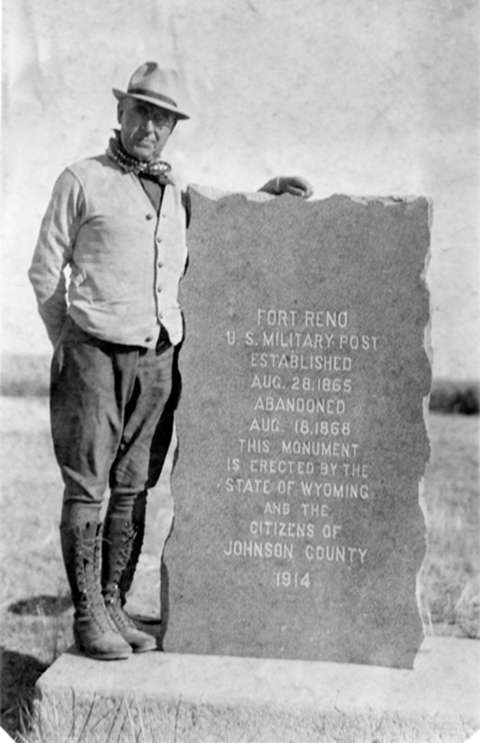
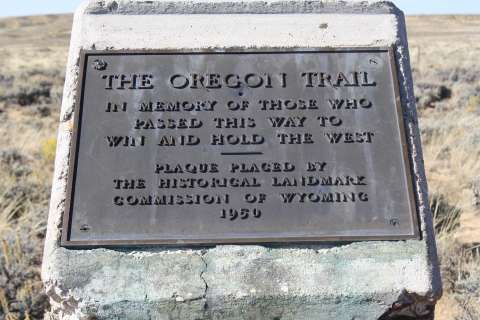
The commission succeeded in acquiring many sites of historical importance, including Fort Bridger and Fort Reno. Generally, these privately owned sites were donated to the State of Wyoming. Eventually too, the Historical Landmark Commission aided in the purchase of Fort Laramie, which the state then turned over to the federal government. The federal government made the fort a national historic site in 1938. The Wyoming Historical Landmark Commission operated until 1959 when its duties were turned over to the Wyoming State Archives, Museum and Historical Department.
The State Archives, Museum and Historical Department worked closely with the State Historical Society and its local chapters. They sponsored a historical marker style and design contest, which the Campbell County Chapter won with a design featuring a 4 feet by 6 feet wooden sign with text carved into it. The second design included the famous bucking bronco on the headboard with the words “WYOMING” while in later years the headboard contained only the name “WYOMING.” The smaller and newer high-pressure laminate signs contained the logo of the ARTS. PARKS. HISTORY, with a bison skull embedded in the “O” in “HISTORY.”
The “Wyoming Historical Sites and Markers and Museums” brochure, featuring 208 historical markers, 115 historic sites and 25 museums, was published in 1962. Also, in that year, the State Parks Commission began working with the Archives and Historical Department. The Parks Commission installed and maintained the signs, while the Archives and Historical Department did research and drafted text. From 1959 to 1966, 56 markers were placed.
In July of 1967, the Wyoming Legislature created the Wyoming Recreation Commission. This commission was created in response to the passing of the National Historic Preservation Act in 1966, which required each state to establish a state historic preservation officer. The officer operated within the Historic Section of the Recreation Commission and was responsible for the management of the monuments and markers throughout the state. The Wyoming State Historic Preservation Office was transferred to the Archives, Museum, and Historical Department in 1985 and in 1999 became part of the newly formed Department of State Parks and Cultural Resources (SPCR). In 2017, Wyoming State Historic Preservation Office transferred the Monuments and Markers Program to Wyoming State Parks, Historic Sites and Trails, also within SPCR.
Today, the Wyoming Monuments and Markers Program operates through a partnership among the Wyoming Department of Transportation, Wyoming Office of Tourism, local governments, tribes and private individuals and organizations. The Department of State Parks and Cultural Resources, Division of State Parks, Historic Sites and Trails is responsible for creating and maintaining these monuments and markers.
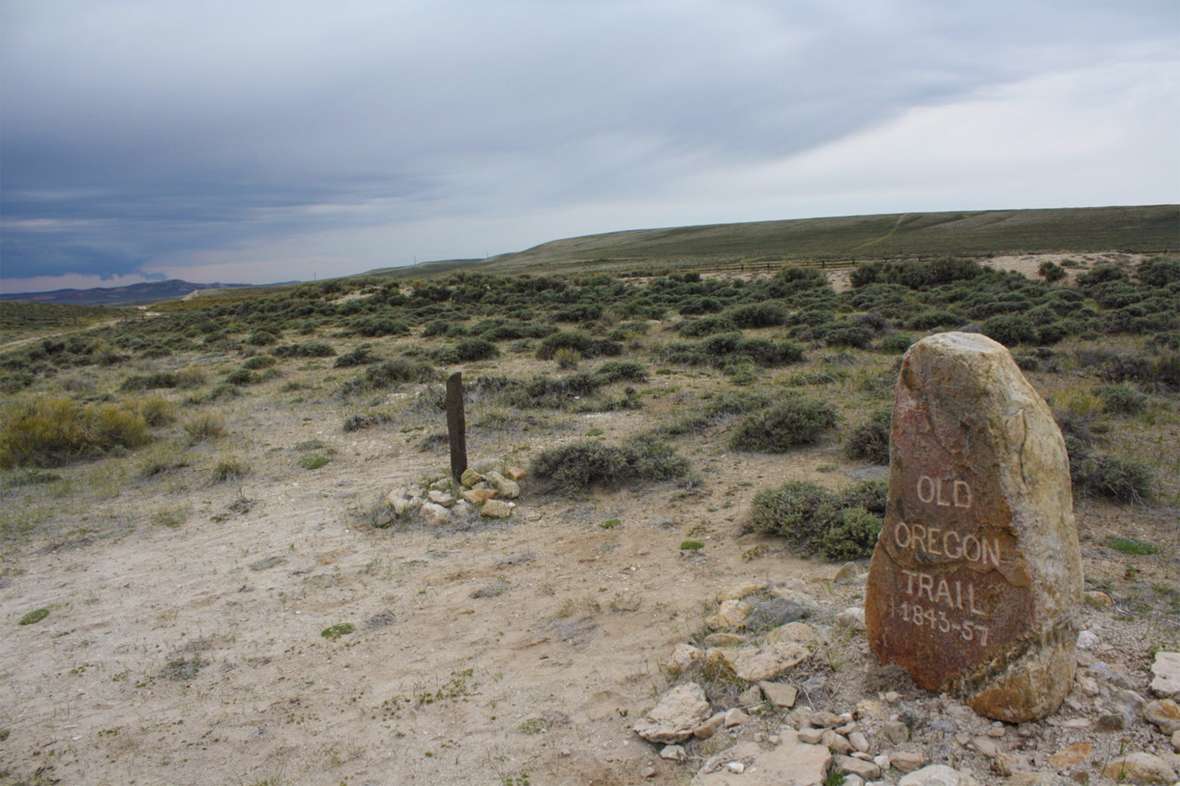
Editors’ note: This article was funded in part by Rocky Mountain Conservancy, a nonprofit Cooperating Association based in Estes Park, Colo., through book store sales at the National Historic Trails Interpretive Center in Casper, Wyo. We offer our special thanks.
Resources
Primary Sources
- Grace Raymond Hebard Collection, Boxes 20 & 65, American Heritage Center, University of Wyoming, Laramie, Wyo.
- Wyoming Legislation, Wyoming Digital Collection Suite, Wyoming State Library.
- Marking the Oregon Trail, the Bozeman Road, and Historic Places in Wyoming 1908-1920.
- First Biennial Report of The Historical Landmark Commission of Wyoming 1927 - 1928.
Secondary sources
- Carlson, Susan. Wyoming Historical Markers at 55mph: A Guide to Historical Markers and Monuments on Wyoming Highways. Cheyenne, Wyo.: Beartooth Corral, 1994.
- Jording, Mike. A Few Interested Residents: Wyoming Historical Markers and Monuments. Helena, Mont.: Skyhouse Publishers, 1992.
- Rea, Tom. "Story Spots." Annals of Wyoming 78, no. 2 (Spring 2006): 25-36.
Illustrations
- The portrait of Ezra Meeker is from the Library of Congress. Used with thanks.
- The photo of Robert Ellison at the Fort Reno Monument is from Wyoming State Archives. Used with permission and thanks.
- The rest of the photos are from the American Heritage Center at the University of Wyoming. Used with permission and thanks.
